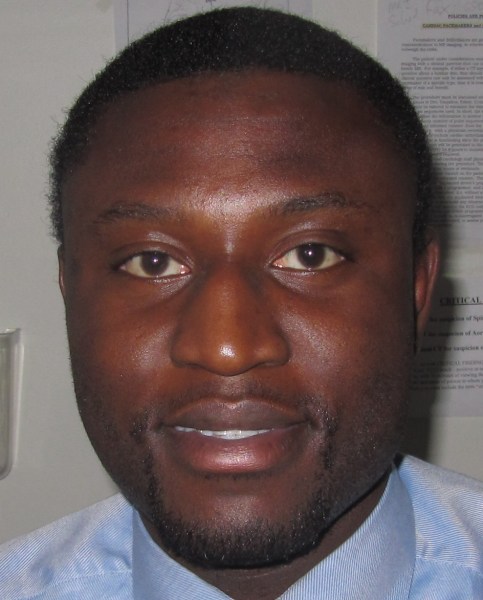Healthgraphic is a startup building a comprehensive health information graph database. With its API, it intends to power a new generation of recommendation apps to help patients make smart health decisions.
Being sick can be unsettling. It forces us to humbly recognize the importance of our body and how little we know about it. When we seek help from doctors and medical professionals, we may feel overwhelmed by medical jargon and and the complexity of navigating the healthcare system. So how can patients feel more empowered to make decisions and be more proactive in their care instead of feeling helpless?
Healthgraphic, a startup from Palo Alto, California, has a solution. It is building a database of consumer health information and an API to power a new generation of recommendation tools.

“We’re focused on providing instant high quality, easy to digest health information and recommendations that help people make better health decisions. By suggesting health services, treatment options and online resources, we hope to empower people to make the decisions right for them” explains Henry Andoh, CEO of Healthgraphic.
Using a graph approach, Healthgraphic is mapping the relationships between symptoms, diagnosis, diseases and treatments. This rich graph will be used to make smart health-related recommendations. Imagine that when you asked health related question, the application not only answered the question but anticipated follow-up questions and suggested services you may find useful. For example, if you asked “What is Type 2 diabetes?” you got a quick, accurate answer along with suggested third-party apps to book a doctor’s appointment to get a blood test to be diagnosed.
A year ago, Healthgraphic set out to build the rich semantic representation of health concepts that would be the cornerstone of its business. It chose the Neo4j graph database as its backend for its recommendation capabilities.
To ensure its data would be accurate, Healthgraphic assembled a team of doctors. “We truly needed the ability to curate the content that goes into the graph to ensure that recommendations were contextually and medically relevant. That human touch is important to us.” says Andoh.
The most graph-savvy team members used Neo4j’s built-in browser and the Cypher query language to enter data. The process was slow and posed a series of challenges. Healthcare professionals without coding skills struggled or couldn’t contribute to the data. Without their input and with a slow process, creating the health graph would have required years.
“We started thinking that the project may not be feasible without using some form of mass data import. That would have required to make big sacrifices in the level of accuracy and personalization of our graph” explains Andoh.
Healthgraphic started looking for a solution to help non-specialists enter and curate graph data. “When I tried the demo, I realized it could be a game-changer for us. The moment we added our first disease cluster, I realized that we could build the API we had envisioned building. We went from thinking that the project may not be feasible to thinking that we could curate the data in months.”
With a Neo4j graph database already in place, Healthgraphic was able to deploy Linkurious in a few minutes. From that point on, its team of doctors could use Linkurious through their web-browser to visualize and edit data easily.
Linkurious helped Healthgraphic speed up the creation of its health graph. Creating data became as much as 5 times faster. “Linkurious allowed us to easily add data and edit our graph using a simple interface without writing a single Cypher clause. The time saved was immense” says Andoh. The number of errors also dropped as a result for the easy data entry capabilities of Linkurious.

In addition, the search engine included in Linkurious made it fast and convenient to find nodes and edges of interest. As a result, reviewing data became faster. “The visualization makes it easy for us to quickly spot errors or ways to tweak our database design through labels. In fact, one of our database design tweaks came from looking at the visualization and seeing the interactions between the nodes and some traversal issues that we could avoid” explains Andoh.
More importantly, Linkurious allowed Healthgraphic to leverage the knowledge of healthcare professional who were not graph-savvy. With the easy to use Linkurious interface, they could contribute data and help build Healthgraphic’s graph.
Healthgraphic has built a comprehensive health graph that maps the relationships between symptoms, diseases, diagnosis and treatments. Linkurious has helped speed up the graph’s creation and ensured a high level of data quality.
Now the California based startup is looking to turn its health graph into insights. Context relevant suggestions and recommendations can help bridge the information gap and guide individuals to useful services and resources. This may allow some individuals to feel empowered in making health decisions and result in them taking a more proactive role in their care. “We believe empowered patients can have better conversations with their doctors that can lead to them making the decision right for them. Our algorithms make smart recommendations that anticipate the needs of users and suggest options they may not have thought of. This makes information discovery easy and hopefully allows patients to make smart health decisions” says Andoh.
Contact Healthgraphic at hello@healthgraphic.com or visit their website if you’re interested in using the API.
A spotlight on graph technology directly in your inbox.